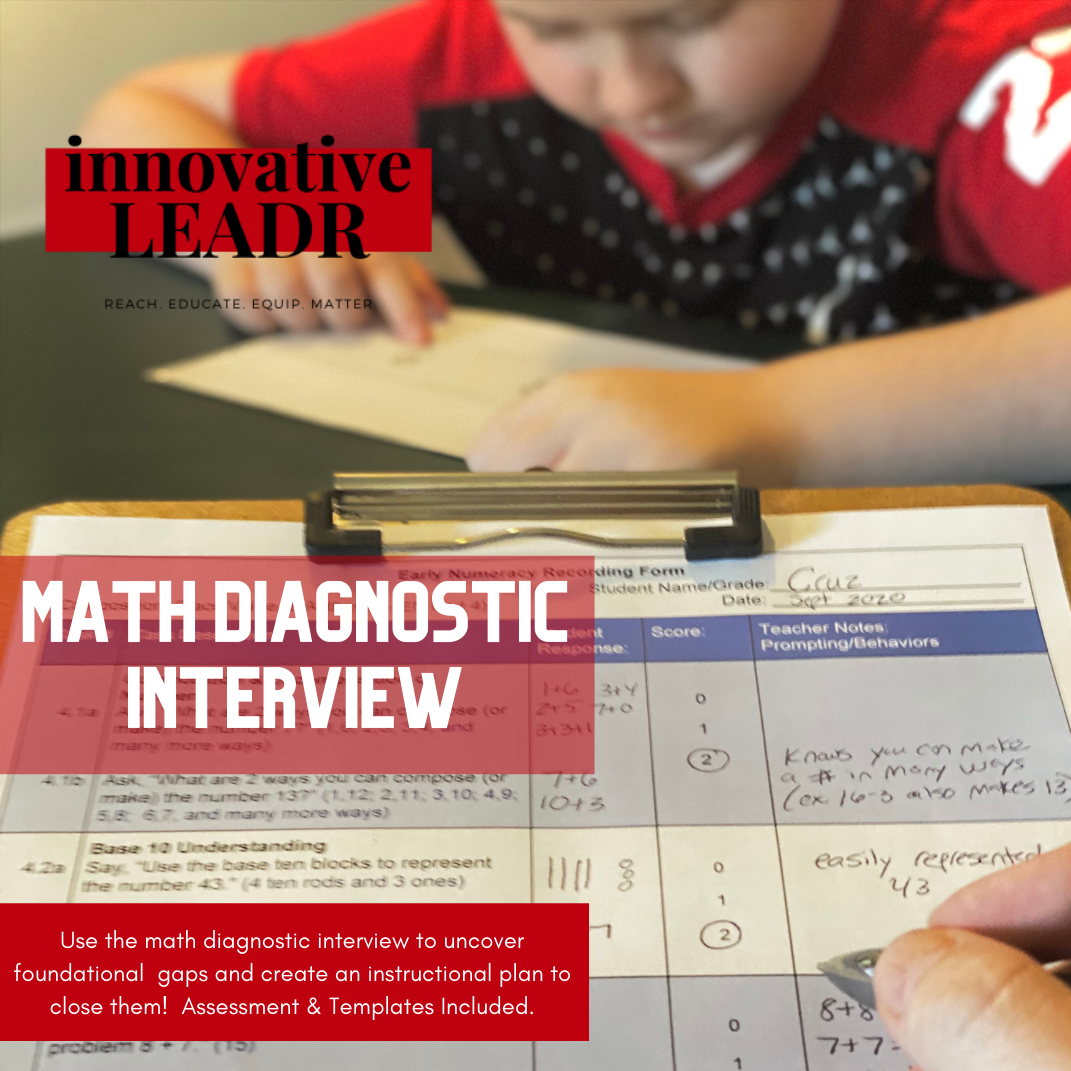
Math Diagnostic: Interview Students to Uncover Their Needs
Written by: Allison Kiser
A student math diagnostic tool for teachers, educators and schools. A tool used to identify students’ strengths and weaknesses in their math understanding.
Teachers have lost a lot of time with students because of the pandemic. How can teachers really see where their students’ understanding of math content is? How can teachers figure out how strong their students’ number sense is?
The answer to both questions lies in two simple words: math diagnostic assessment.
A math diagnostic assessment is a type of a pre-assessment that teachers can give their students to evaluate their students’ strengths, weaknesses, knowledge and skills. A diagnosis itself is defined as the identification of the nature of an illness by an exam of the symptoms. Diagnosing is exactly what teachers need to do with their students and their number sense.
Some diagnostic assessments are more effective as screening tools, but they are not effective as diagnostic tools.
My daughter’s first-grade teacher administered what they called a math diagnostic assessment last month with the goal of showing the teacher what students knew and didn’t know. At one point, the computerized assessment asked my daughter to solve 25 + 28. I sat beside her to watch her work because I was curious about her number sense due to how the pandemic affected her kindergarten year. And I am also a math nerd and love to listen to how children think about the math! She solved the problem and clicked on the correct answer.
Yes, she got the correct answer to a double-digit addition problem. She actually got every double-digit addition and subtraction problem correct. The online assessment collected this data.
Sitting next to Brielle, here is what I observed as she solved 25 + 28: She clicked on the hundreds chart tool that she was allowed to use. She started at the first number, 25, and then she pointed to the hundreds chart on her screen as she counted 28 more numbers one-by-one to arrive at her answer of 53. Watch the video of my daughter showing how she solved 25 + 28 like she did on her assessment.
https://www.youtube.com/watch?v=orldwFyrzPE
What would a teacher learn about my daughter’s understanding of double-digit addition from seeing the first set of data? Would the teacher be able to diagnose anything? No, they would only see that she obtained the correct answer. Since my daughter got all of the double-digit addition and subtraction problems correct, the data may show the teacher that she is proficient with this math skill. But is she?
What would a teacher learn about my daughter’s understanding of double-digit addition from seeing the second set of data? By sitting next to my daughter, the teacher would have seen that she used the hundreds chart tool precisely and proficiently for every double-digit addition and subtraction problem. She used the counting on and counting back strategy for every one of these problems. She perseveres and is confident in her approach. Her addition fluency is accurate but not efficient or flexible. Her strategy works for her to get the correct answer but is a lower-level strategy because she is counting one-by-one, which will not be efficient as she gets to larger numbers. The teacher will want to expand her strategies to using friendly numbers or decomposing numbers and for her to expand her understanding of place value and learn that she can add or subtract in groups and not just one-by-one.
My colleague, Janna, and I decided to create a math diagnostic assessment to help teachers identify students’ strengths and weaknesses in their mathematical understanding. We quickly realized that in order to truly assess a student, we need to sit beside them and observe them. We need to watch them solve math problems or we will miss out on how they are thinking about the math. Whereas we initially called our tool a math diagnostic assessment, we decided to rename it because it’s actually an interview. So, it’s now called a Math Diagnostic Interview, and you can buy it from our shop!
The Math Diagnostic Interview was created by educators dedicated to identifying students’ strengths and weaknesses in their mathematical understanding. The interview is not a universal screener to be administered to all students. However, it is intended to serve as a 1:1 diagnostic interview with students to learn more about their level of understanding in foundational skills that are critical for conceptual understanding of mathematics. A research-based universal screener should be used to first identify students who are at risk for difficulties in mathematics. Once students are identified, the Math Diagnostic Interview can be used to determine deficits and target instruction based on need.
We cannot assume anything about students’ understanding. We should work to discover what students know so that we can teach them what they need to learn.
Looking for your own copy of the diagnostic? You can purchase and download here!
Want to purchase a site license? Please email info@i-leadr.com for your personalized invoice.
